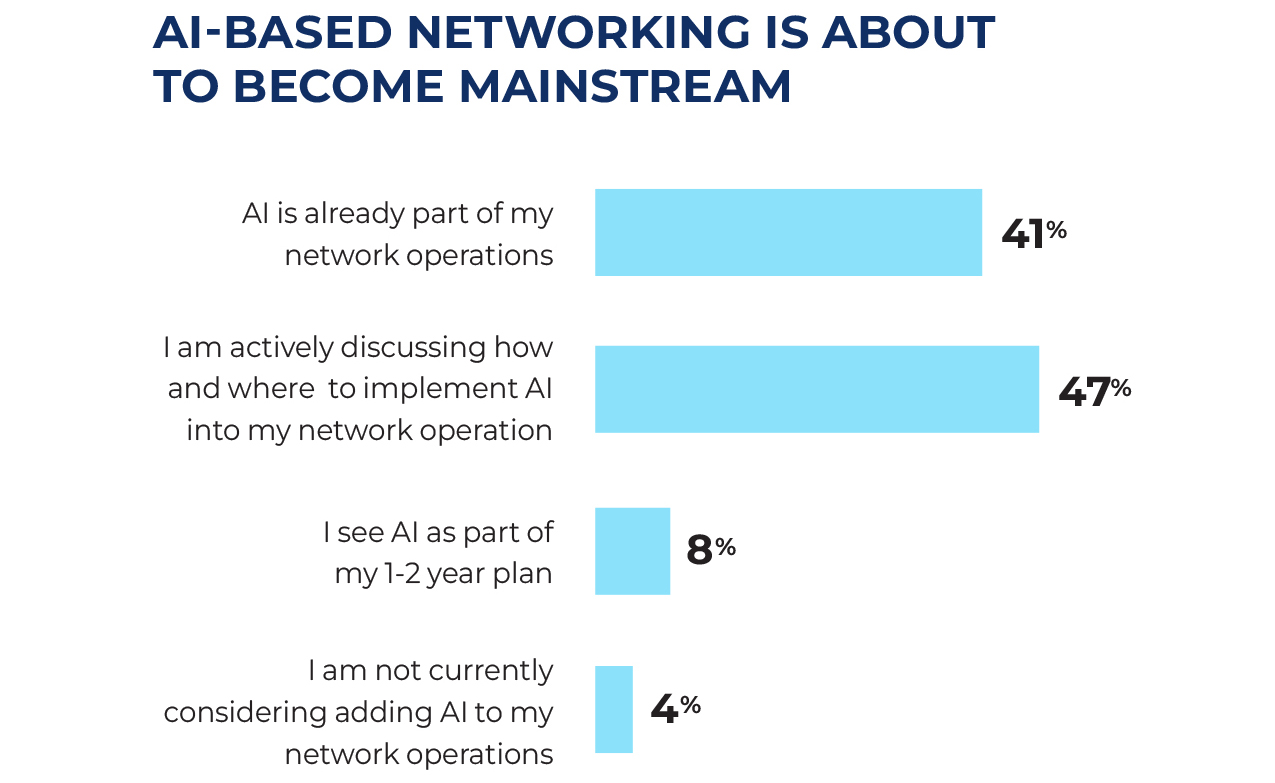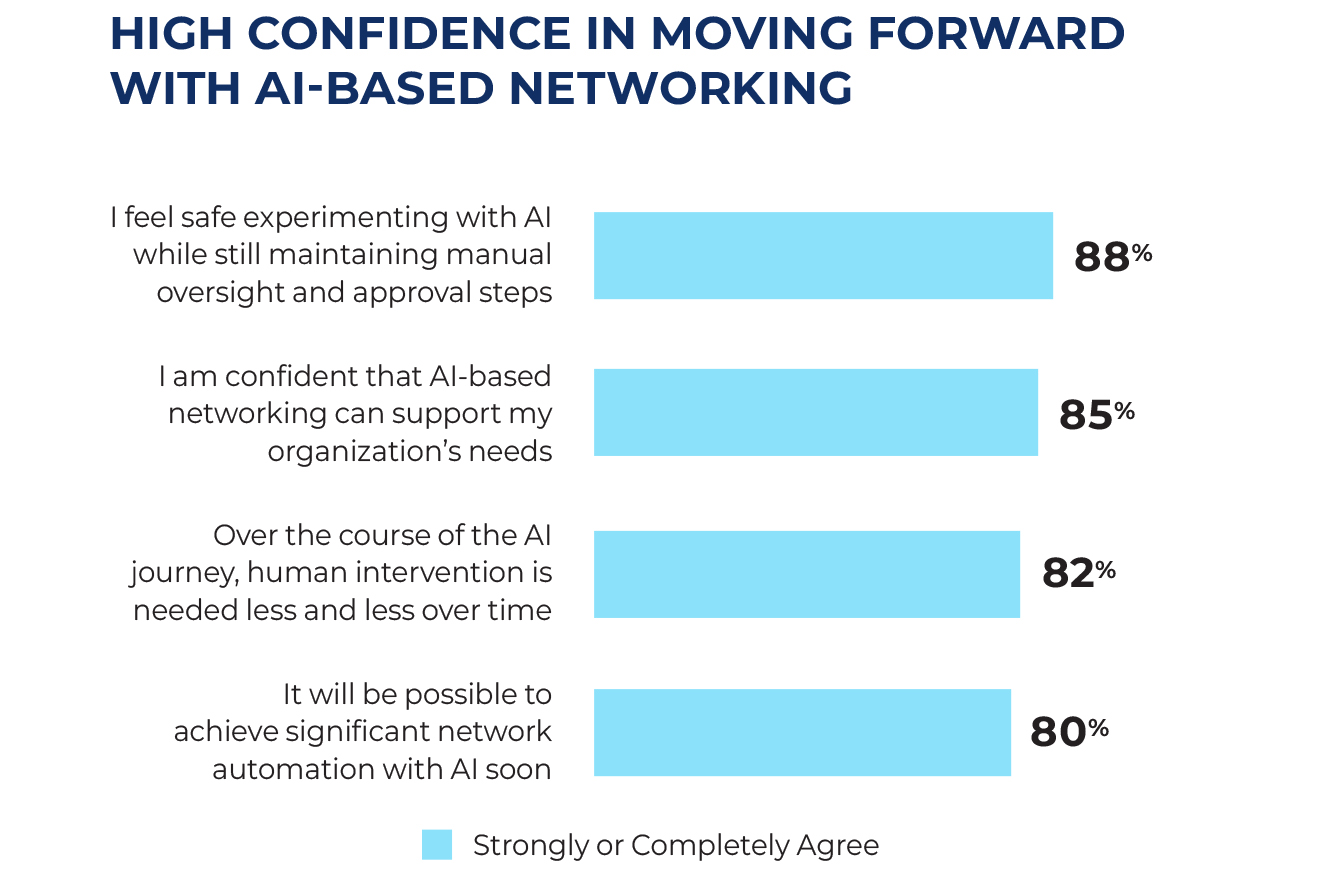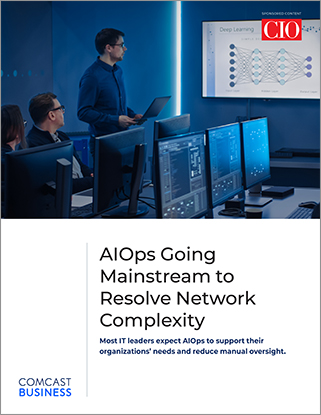CIO Report: AIOps Going Mainstream to Resolve Network Complexity

Enterprise IT leaders are eager to apply AI-driven automation to ease the growing complexity of connectivity across clouds, digital platforms, and a myriad of devices. In a new survey, 96% of IT decision-makers state AI is already either a part of their network operations or in their near-term plans.
The survey, conducted by Comcast Business with Foundry (formerly IDG Communications), provides clear-cut evidence that AI-based network automation is entering the mainstream. Respondents have a high level of confidence in the promise of network AIOps (AI for IT operations) capabilities, but view AI adoption as an evolutionary process they are eager to accelerate.
It’s not hard to understand the red-hot pace of adoption as network and security teams struggle with exploding data, distributed environments, management challenges, manual processes, and delayed analysis due to complexities. “IT teams are being forced to work more efficiently in environments that are growing more complex every day,” says Ajay Pandya, Director of Product Management for Masergy, a Comcast Business company.
Just 4% of respondents indicate they are not yet implementing or planning for AI-based networking. But most IT decision-makers are, with 41% saying AI is already part of the network operations, 47% actively discussing how and where to apply it, and another 8% planning to do so in 1-to-2 years.

Source: Foundry and Comcast Business
High levels of confidence
There is broad agreement that enterprises will be able to rely on AI-based networking automation, with 88% indicating they feel safe experimenting with AI while still maintaining manual oversight and approval steps. Furthermore, 85% of respondents strongly or completely agree that AI-based networking can support their organization’s needs and 82% believe that human intervention is needed less and less over time.
AIOps engines get smarter over time as they observe real-time data, and AIOps providers are applying advanced analytics to more features inside the network configuration console. The goal is to reach a key milestone of closed-loop automation where the engines can not only identify problems and repairs but also take action to resolve those problems automatically.

Source: Foundry and Comcast Business
Still, survey respondents seem to be differentiating what they see as the potential of the technology from what they’re willing to rely on today. Almost half firmly believe that AI-powered networks are not yet ready to handle many manual tasks, and thus are wary of the risks of entrusting their networks to AI before the time is right.
That likely reflects an understanding that AIOps tools are advancing along a maturity curve, gaining more sophisticated capabilities to turn analytics into true automated processes. Also, organizations are just starting to develop experience in their ability to both train and trust AIOps engines.
“AIOps is just like buying a self-driving car for the first time — you’re not going to trust the car to do everything all by itself on day one,” Pandya explains. “We’ve seen that companies start slowly, using AIOps for visibility and recommended solutions first before looking to it for automated responses. That’s why it’s good to start this journey early.”
How automation can resolve today’s network problems
AIOps proponents say the technology can make data-driven recommendations around resource allocation. Solutions will automatically evaluate network performance history, real-time data, and service priorities, helping IT leaders predict and prevent outages and degradations, intelligently manage application policies, and forecast bandwidth and network capacity needs.
The top three IT functions that can benefit from automation, according to most survey respondents, are security threat detection (60% of respondents), network performance optimization (60%), and network analysis (58%). Just under half would include in the top three the ability to accelerate threat response applications and processes to speed containment and neutralization.
Additionally, 40% would elevate cloud application analysis into the top three ranking of benefits. Pandya says AIOps will calculate cloud app performance propensity, understand and isolate the causes of service degradations, and suggest edits to app policies and network configurations.
As solutions and experiences mature, machine learning algorithms can recognize patterns specific to a corporate network and its users, and harness predictive anomaly detection to find potential issues faster than humanly possible.
AIOps will automate configurations and policies
“AIOps takes over where enterprise IT departments leave off,” Zeus Kerravala, founder and principal analyst of ZK Research, writes in the recent Buyer’s Guide for AIOps. “The AI engine can monitor the entire network, including legacy systems, to identify the source of an issue.”
ZK Research says that AIOps should be natively inherent in or at least integrated with SD-WAN and SASE to provide unified management portals. “AIOps needs its ‘fingers’ on the network and security control panels so it can manipulate configurations and policies,” explains Pandya. “That delivers the agility AIOps needs to crunch data in real time and operate with immediate responsiveness.”
AI-driven automation will accelerate service delivery and reduce outages to ensure essential infrastructure meets business needs and is cost-effective. The survey indicates that IT decision-makers are eagerly adopting AIOps to ensure they’re not left behind on the path to fully autonomous networks.
To learn more about the benefits of network AIOps, read the ZK Research Buyer’s Guide for AIOps, sponsored by Masergy and Comcast Business.
Locked Content
Click on the button below to get access
Unlock NowOr sign in to access all content on Comcast Business Community
Resource Center
Learn how Comcast Business can help
keep you ready for what's next.











